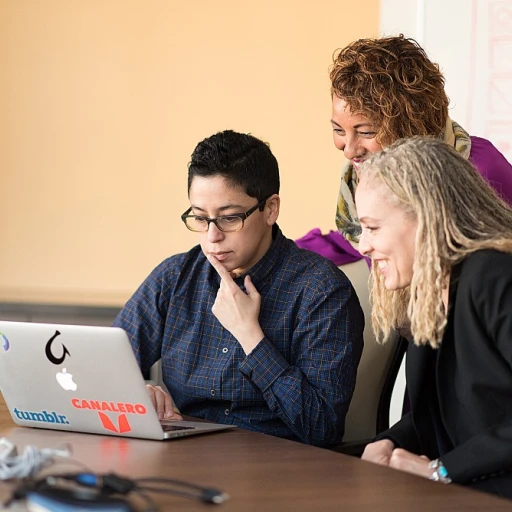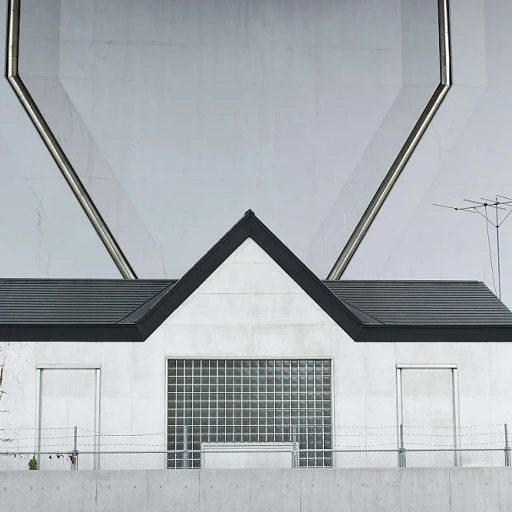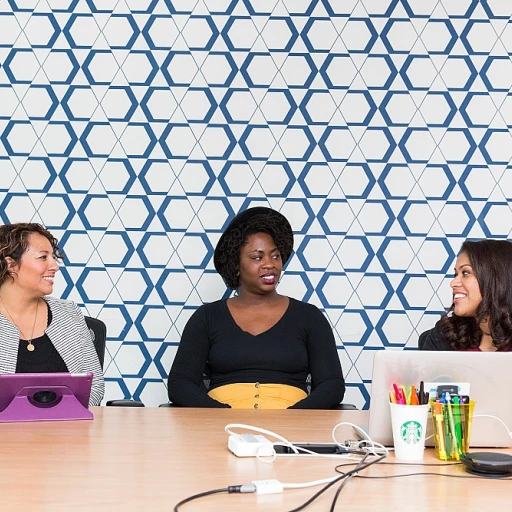
Understanding AI's Role in Design
Embracing AI's Transformative Power in Design
AI has greatly influenced many sectors, and the world of design is no exception. By integrating AI into design processes, teams and individuals can unlock new levels of creativity and productivity. Understanding AI's role in design involves recognizing the ways artificial intelligence can enhance both the creative process and the end product. AI-driven tools are capable of analyzing vast datasets, identifying patterns, and making suggestions that can steer the design process towards innovative outcomes. For example, AI can help synthesize user behavior data into design insights, allowing a more personalized design approach that resonates with users' needs and expectations. Incorporating AI into brainstorming sessions offers an opportunity to generate a wider range of ideas than traditional methods might yield. Not only does it increase the pace of idea generation, but it also expands the diversity of inputs. This can be pivotal in driving innovation and keeping design solutions fresh and relevant. AI also plays a role in automation, handling repetitive tasks and freeing designers to focus on more complex, creative endeavors. Yet, it's crucial to maintain a balance between creativity and automation to avoid over-reliance on AI, which might stifle genuine human creativity—a topic further explored in other sections. For those interested in diving deeper into the intersection of creativity and intelligence, unraveling how these technologies work, the mystery of contextual bandits in design offers fascinating insights. In summary, understanding AI's role is foundational for modern design strategies. Embracing AI-driven advancements can lead to smarter workflows, enriched user experiences, and ultimately more compelling design solutions.AI Tools Revolutionizing Design
Transformative AI Tools for Modern Design
Artificial intelligence is driving a wave of change in the design industry, with new tools reshaping workflows and expanding creative possibilities. From generating ideas to enhancing existing concepts, AI technology is empowering designers to push boundaries and innovate like never before.
One of the primary applications of AI in design is {{product_part}} image generation. Tools like DALL-E and Midjourney leverage deep learning algorithms to transform textual descriptions into visually striking images, offering designers inspiration and saving valuable time in the creative process. The capabilities of these platforms stimulate the imagination, encouraging unconventional thinking.
Another transformative tool is the AI-based design assistant. Such assistants can perform a range of functions, from automating repetitive tasks to providing real-time suggestions for improvements. By handling the mundane elements, AI frees designers to focus on more complex and rewarding creative activities.
AI’s ability to analyze massive datasets quickly is also providing designers with deeper insights into user behavior and trends. This data-driven approach enables more informed design decisions, ensuring that the end products align better with user needs and preferences.
For those looking to further explore how AI is advancing creative industries, consider delving into additional resources on mastering AI in design and discovering new creative avenues.
Balancing Creativity and Automation
Maintaining the Harmony Between Human Creativity and Automation
Incorporating artificial intelligence into the design process often raises concerns regarding the balance between human creativity and the automation of tasks. As we delve into the evolving landscape, it becomes crucial to examine how designers can leverage AI without compromising their innate creative instincts.
Automation offers undeniable advantages, such as enhancing efficiency and reducing mundane tasks. However, true design mastery lies in ensuring that technology complements creativity rather than overshadowing it. When harnessed effectively, AI can act as a catalyst for enhancing user experience, offering unique design opportunities and fostering innovation.
- Creative Process Augmentation: Designers are exploring AI tools that suggest color palettes, generate initial design templates, or provide inspiration. This integration transforms the creative process, offering new viewpoints while preserving the distinctive human touch.
- Workflow Efficiency: Automation helps streamline operations, enabling designers to focus on the essence of creativity. AI-driven services handle repetitive tasks, such as organizing files or analyzing design trends, thus freeing up time for ideation and experimentation.
- Data-Driven Insights: AI empowers designers with valuable insights based on data analysis, helping them make informed decisions. This approach ensures that creativity meets consumer preferences and market demands effectively.
Ultimately, the key lies in viewing AI as a collaborative partner within the design process. Designers should engage with artificial intelligence strategically, ensuring that technology remains a tool rather than a replacement for human ingenuity. By fostering an ecosystem where AI and creativity coexist, we can unlock transformative possibilities that redefine the future of design.
Case Studies: AI in Action
Real-World Applications of AI in Design Processes
Exploring the tangible applications of AI in the design industry can illuminate the revolutionary potential of AI-driven creativity. Many businesses and artists are actively leveraging AI technologies to enhance their design approaches and achieve remarkable results. One exemplary sector that enthusiastically embraces AI is product design. With its ability to process vast datasets, machine learning helps designers predict consumer preferences and market trends with accuracy. By analyzing historical data, AI can suggest product modifications that align with consumer demands, thereby driving innovation consistently. In the realm of graphic design, AI tools improve workflow efficiency considerably. Design solutions powered by AI, such as algorithm-driven layout tools, empower designers to automate mundane tasks. This automation enhances productivity, allowing creative professionals to concentrate more on their artistic vision. Architects, too, benefit significantly from AI inclusion. Advanced software now helps them simulate various environmental factors before laying down crucial architectural designs. This lead to structures that are both sustainable and responsive to their surroundings. AI's influence permeates even further into digital marketing, where it provides real-time data to personalize user experiences. Through AI, marketing teams can predict user engagement and modify design strategies on-the-fly, optimizing success rates. As the technology integrates more deeply across various fields, designers are increasingly witnessing a shift towards AI-enhanced creativity. AI assists in idea generation, style decomposition, and design modification, opening an unprecedented landscape of opportunity. In sum, AI's impact on design extends beyond theory and is actively reshaping processes across numerous industries. Its ability to process data efficiently and present insightful analysis is becoming an undeniable part of the creative toolset.Ethical Considerations in AI Design
Addressing Ethical Dimensions in AI-Driven Design
Navigating the ethical landscape in AI innovation requires a nuanced approach. As AI tools increasingly shape design practices, they introduce new ethical considerations that designers must carefully evaluate. First, privacy is a paramount concern. As AI algorithms process vast amounts of data, including personal information, it is crucial for designers to ensure transparent data collection and usage practices. Designers must prioritize data protection and demonstrate a clear commitment to user privacy. Bias is another critical ethical issue in AI applications. AI systems can inadvertently perpetuate biases present in the data they are trained on. Designers should strive to understand and mitigate these biases in their creative processes. This involves critically assessing the datasets used and implementing measures to enhance fairness in AI outputs. Intellectual property rights also come into play with AI-generated content. As AI becomes more sophisticated in creating designs, questions arise about ownership and authorship. Designers must navigate these waters carefully, ensuring that AI-generated work aligns with existing legal frameworks and respects creative ownership. Lastly, the balance between AI and human input is essential. While AI can enhance creativity, it should not replace the unique human touch inherent in design. Designers should focus on maintaining their creative voice and using AI as a tool to complement and elevate their ideas. By addressing these ethical considerations, the integration of AI in design can be both innovative and responsible, fostering a sustainable and trustworthy design environment.The Future of AI and Creativity
Emerging Trends in Creative AI
As we peer into the horizon of AI-driven design, several trends are beginning to take shape, promising to redefine the collaborative relationship between human creativity and machine intelligence.- Adaptive Learning: Tools are evolving to better understand and adapt to unique design styles, ensuring AI serves as a personalized creative assistant.
- Enhanced User Interfaces: Advances in user experience (UX) are making AI tools increasingly intuitive, minimizing the learning curve and maximizing accessibility for designers at various skill levels.
- Sustainability Focus: With an eye on eco-friendly innovation, AI is being harnessed to minimize waste in design processes, advocating for sustainable practices and responsible consumption.














